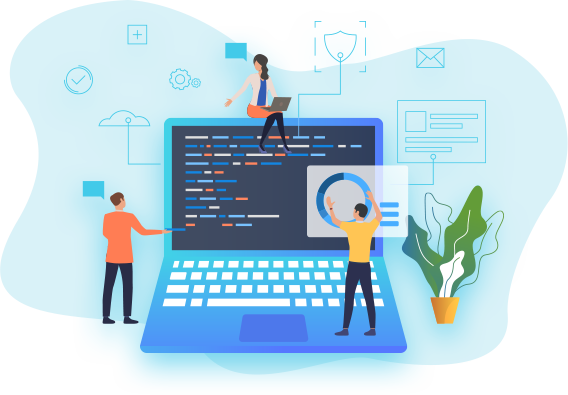Developing a Dataverse Integration Automation Using Azure Logic Apps

Integrating Microsoft Dataverse with other applications can significantly enhance your business processes. By leveraging Azure Logic Apps, you can automate data flows, synchronize records, and trigger actions across various services seamlessly. This blog post will guide you through developing a Dataverse integration automation using Azure Logic Apps step-by-step.
What is Microsoft Dataverse?
Microsoft Dataverse is a cloud-based storage solution that allows you to securely store and manage data used by business applications. It provides a standardized and scalable way to manage data with built-in security, compliance, and governance features.
Why Use Azure Logic Apps for Dataverse Integration?
- No Code Solution: Logic Apps provide a low-code environment, making it accessible for non-developers.
- Extensive Connectors: Connect easily to Dataverse and other services (like SharePoint, Outlook, etc.) with built-in connectors.
- Scalability: Handle high volumes of transactions effortlessly.
- Flexible Workflow Automation: Create complex workflows with conditions, loops, and parallel processing.
Prerequisites
Before we start, ensure you have the following:
- Azure Subscription: Create a free account if you don’t have one.
- Microsoft Dataverse: Access to a Dataverse environment.
- Basic Understanding of Azure and Dataverse: Familiarity with the Azure portal and Dataverse concepts.
Step-by-Step Guide to Create a Dataverse Integration Automation
Step 1: Create a Logic App
- Log in to Azure Portal: Access the Azure Portal.
- Create a Logic App:
- In the search bar, type “Logic Apps” and select it.
- Click on “+ Add” to create a new Logic App.
- Fill in the necessary fields: Subscription, Resource Group, Logic App name, and Region.
- Click “Review + Create” and then “Create.”
Step 2: Design the Workflow
Once your Logic App is created, you’ll be redirected to the Logic App Designer.
- Choose a Trigger:
- Start by selecting a trigger for your integration. For example, you could choose “When a record is created” in Dataverse.
- Configure the trigger by selecting the Dataverse environment and the entity you want to monitor.
Step 3: Add Actions
After the trigger, add actions that define what should happen when a new record is created.
- Add Action for Dataverse:
- Click on “+ New step” and search for “Dataverse.”
- Choose the action you want, such as “Get a record” or “Create a record.” For example, if you want to create a record in another system (like SharePoint or another Dataverse entity), select “Create a record.”
- Configure the Action:
- Fill in the required fields based on the data you want to transfer. Use dynamic content to map fields from the trigger to the action. This ensures that the correct data is passed along.
Step 4: Add Additional Steps
Depending on your integration needs, you can add additional steps. For example:
- Add Conditions: Use conditions to perform different actions based on the data.
- Loop Through Items: If you are dealing with multiple records, you can use loops to process each record iteratively.
- Error Handling: Implement error handling to manage failures gracefully.
Step 5: Test Your Logic App
Once your workflow is configured:
- Save Your Logic App: Click the save button to apply all changes.
- Test the Workflow:
- Create a new record in the Dataverse entity you set as your trigger.
- Monitor the Logic App runs in the “Runs history” section to see if it executed successfully.
Step 6: Monitor and Optimize
- Check Run History: Access the “Runs history” to review the status of your Logic App. Here, you can see any errors and debug your workflow if needed.
- Set Up Alerts: Consider setting up alerts to notify you of failures or performance issues.
Step 7: Publish and Share
Once your Logic App is tested and functioning as expected, you can publish it for broader use within your organization. Share the Logic App details with your team or stakeholders to enable collaboration.
Conclusion
By following these steps, you’ve successfully created a Dataverse integration automation using Azure Logic Apps. This integration can streamline your business processes, improve data accuracy, and save time on manual tasks.
Next Steps
Explore more complex integrations and workflows by incorporating additional services or conditions. Azure Logic Apps also support monitoring and analytics, so consider leveraging these features for ongoing optimization.
Further Reading
Feel free to share your experiences or questions in the comments below! Happy automating!
